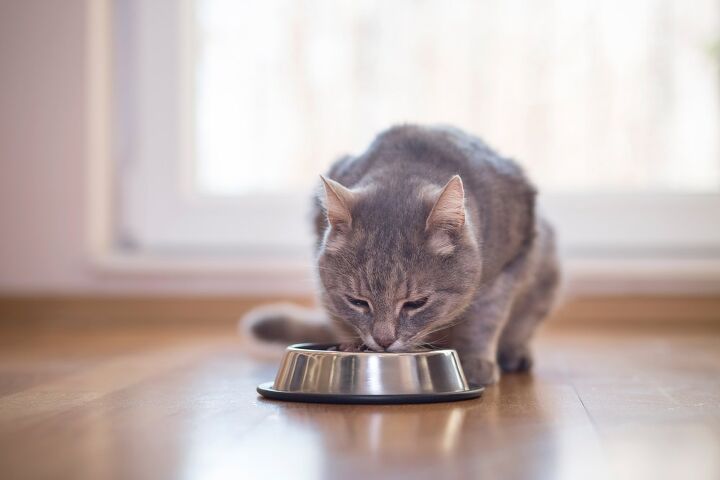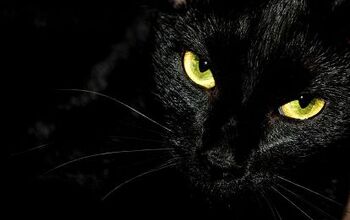Dr. Jean Hofve Shares Valuable Feline Nutrition Tips

Dr. Jean Hofve is a wellspring of information when it comes to feline care and nutrition, thanks to her experience in the veterinary field and 25 years’ worth of research on pet food. She has shared her knowledge in books and on her website, Little Big Cat, which is a valuable resource for anyone interested in holistic pet care.
We were excited to have the opportunity to chat with Dr. Hofve about all things related to feline nutrition, and the interview below sheds light on some steps that you can take to help your kitty stay happy and healthy.
First off, can you tell me a bit about yourself and your background in veterinary medicine and feline nutrition?
Dr. Jean Hofve: I wanted to be a veterinarian ever since I was a little girl, but that wasn’t one of the options that little girls had in the 1950s. So I was kind of a late bloomer, not coming to veterinary medicine until I was in my 30s. Then, in my junior year of vet school, I was introduced to holistic medicine and homeopathy, and my potential career took a sharp turn. I started researching pet food, and I’ve practiced holistically ever since.
In 1999, I became an “advisor” to AAFCO (Association of American Feed Control Officials, the organization that sets the standards for pet nutrition), and have been doing that off and on ever since. Boy, is that ever an eye-opener!
In 2002, I met Jackson Galaxy at a friend’s house, and immediately knew that our partnership was going to be important. We hired a webmaster, crossed our fingers, and launched Little Big Cat.
Is it true that many veterinarians are unable to provide sound advice when it comes to nutrition for cats? If so, why is that the case?
Dr. Jean Hofve: It’s definitely true. In four years of veterinary school, my class had a half-semester of nutrition—mostly about livestock and poultry—and one 2-hour lecture on dog and cat nutrition. Even for that pitiful period, we had a guest teacher, a guy from Hill’s. His lecture consisted of: “A is for anorexia, C is for cystitis, K is for kidneys… Any questions?” That was it. Things have improved, at least at Colorado State, but it’s still not a high priority in a lot of schools.
How much of an impact does nutrition, and how food is prepared, have on a cat’s health and longevity?
Dr. Jean Hofve: 100%. It’s the foundation. Without “good groceries,” the body can’t properly maintain itself, let alone heal from illness or injury. Throw everything else out, but make sure you’re feeding the best possible food.
In terms of what cats require nutritionally to thrive, what do pet parents really need to know?
Dr. Jean Hofve: Perhaps the easiest thing to remember is what cats don’t need: dry food of any kind. Cats do best on high-protein, high-fat, low-carbohydrate wet diets: canned, raw, or homemade.
What are the most common misconceptions that cat owners have regarding the best nutrition for their feline companions?
Dr. Jean Hofve: “Dry food cleans the teeth.” No, it doesn’t. It never did. Yet, pet food makers—who know better—love to perpetuate that myth because the profit margin on dry food is way higher than on any other form of pet food.
“My cat isn’t fat.” Sorry, but odds are that your cat is among the 53% of American cats who are overweight. Most cat parents are bad at estimating their cat’s weight and body condition. Many veterinarians are reluctant to confront people about it. They might say, “You know, Fluffy could stand to lose a little weight.” But without intensive counseling and guidance, which most veterinarians don’t do, next year, Fluffy will be even fatter.
Speaking of cleaning teeth, how much of an impact does nutrition have on a cat’s dental health?
Dr. Jean Hofve: In my experience, genetics are a bigger factor.
What is your take on carbohydrates for cats? Are you at all for the inclusion of fruits and vegetables? Or do you feel it should be solely meat and absolutely no grains, fruits, or veggies?
Dr. Jean Hofve: Cats have no physiological need for carbohydrates after about 4 weeks of age. However, I like to include some pureed veggies for variety, nutrients, and antioxidants—and to make life easier for me when I make the food.
I add a jar of organic veggie baby food (sweet potatoes are the favorite in my house) per pound of meat. I mix the supplements and baby food first, then mix it into the meat, and freeze it in 3-4 oz. portions.
Even low-carb commercial cat foods typically contain some fruits and veggies. They’re not necessary, but I don’t have a problem with them unless they comprise more than 10% of the diet. Dry foods fail that test—they’re usually more like 30-50% carb.
There are a lot of different types of food available for cats (dry, canned, freeze-dried, raw, home-cooked). What type of cat food do you recommend most, and which do you recommend least? If you had to list these options from best to worst, what would your list look like, and why?
Dr. Jean Hofve: As I get older, I get a little crankier about this, but I believe that dry food is literally a death sentence for cats. But here is my “Paw System” (from my Holistic Cat Care book with Dr. Celeste Yarnall):
5 Paws: A balanced, homemade raw meat diet. This diet is ideal because you can personally control the quality and amount of every ingredient. Alternatively, you can also buy commercial raw meat diets in frozen, freeze-dried, and dehydrated varieties, either online or in many specialty pet stores. Raw meat can be lightly sautéed as an intermediate stage in transitioning to raw, or even as the final stage for cats who can’t have or don’t do well on fully raw meat. Make sure the food is at a safe temperature before feeding, and add digestive enzymes and probiotics just before serving.
4 Paws: Organic or natural canned cat food. A sprinkle of digestive enzymes is a must. To take this diet up a notch, add a little fresh raw or lightly cooked meat to each meal—or whenever you can. Even a weekly treat of raw meat is far better than none.
3 Paws: Other canned cat food, whether from the giant, highly advertised manufacturers (such as the major brands at pet food retailers that are often sold by or recommended by veterinarians) or grocery and discount store brands. Supplement the food with digestive enzymes, probiotics, and omega-3 fatty acids.
2 Paws: Organic and natural dry cat food. The definition of “natural” is broad, and allows for genetically modified and artificially processed ingredients that most of us would consider completely unnatural. The term “organic” does have a strict legal definition. If you’re looking for an organic cat food, be sure to read the ingredients list carefully. You might find that every ingredient has the term “organic” in front of it except the primary protein. For example, you might see something like: “Organic chicken, organic brown rice, chicken meal, organic carrots….” Because “organic chicken” is mostly water, the chicken meal—which isn’t organic—is the primary protein. If each and every ingredient doesn’t specifically say organic, it isn’t.
1 Paw: Other dry cat food, including premium and “veterinary” brands, as well as grocery, discount, and private label brands.
No Paws: An all-meat or “raw meaty bones only” diet with no added supplements. This is extremely unbalanced and will cause serious nutritional deficiencies over time.
Can you provide any advice or guidelines for cat owners who wish to cook their own pet food at home? How can they be sure that their recipes are nutritionally complete and appropriate for their cats?
Dr. Jean Hofve: Check out this guide. I also recommend TCFeline, Balance IT, or a similar “complete” supplement.
Recalls in the pet food industry are unnervingly common, so what can cat owners do to protect their pets?
Dr. Jean Hofve: Feed a variety of brands and flavors. In nearly all cases of illness and death, cats were eating a single brand or flavor of food; or worse, eating just one food for a long period of time.
How can a cat owner be sure that they’re purchasing a high quality food for their kitties?
Dr. Jean Hofve: Here is my helpful guide to selecting a commercial pet food.
Are there any cat food ingredients that should be avoided?
Dr. Jean Hofve: Chemical preservatives (BHA, BHT, propyl gallate, ethoxyquin, etc.), carrageenan, and corn products of any type (virtually guaranteed to be genetically modified).
What are the best meat sources for cats (e.g. poultry, pork, rabbit, beef, fish, etc.)? Do you recommend organ meats, eggs, and/or bones?
Dr. Jean Hofve: I tend to stick to poultry (chicken, turkey, duck, quail), with a little beef, rabbit, venison, etc. for variety.
Occasionally, I try to sneak in something more exotic, such as beaver or brushtail, though without a lot of success. What I think is good for them isn’t always a big hit.
I do recommend organ meats if your cat will tolerate them. Eggs are fine, too. Many excellent commercial cat foods contain liver, which is a great source of vitamins A and D.
How do you feel about people who feed their cats a vegetarian or vegan diet? Is it possible to make a nutritionally complete diet for felines if it doesn’t contain animal products?
Dr. Jean Hofve: Don’t do it, and no, you can’t. There are “vegan” cat foods that substitute artificial chemicals for nutrients found only in animals, but I don’t recommend them. Cats can get very sick on those diets. It’s especially devastating to kittens. You can read more here.
Is there anything else that you’d like to add that we didn’t already talk about?
Dr. Jean Hofve: I don’t recommend fish-based food for cats (although the small amount of fishmeal included in many foods for flavor or as an omega-3 supplement is fine).

Lisa Selvaggio is a freelance writer and editor, and our resident cats-pert, with certifications in pet nutrition and pet first aid. She enjoys producing content that helps people understand animals better so they can give their pets a safe and happy home.
More by Lisa Selvaggio























